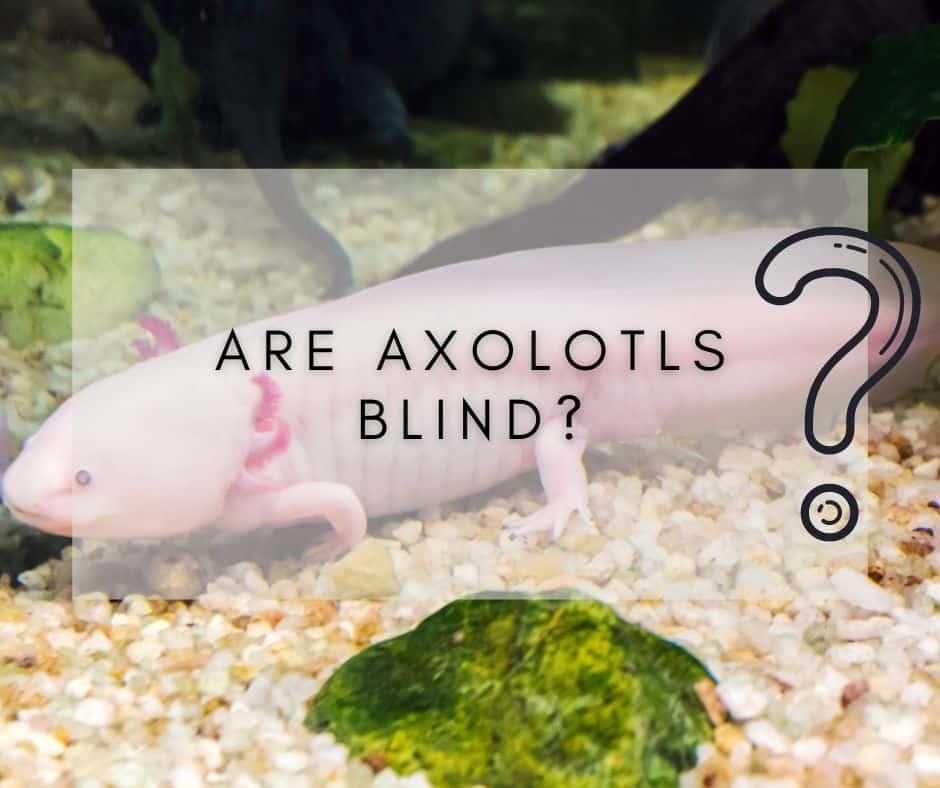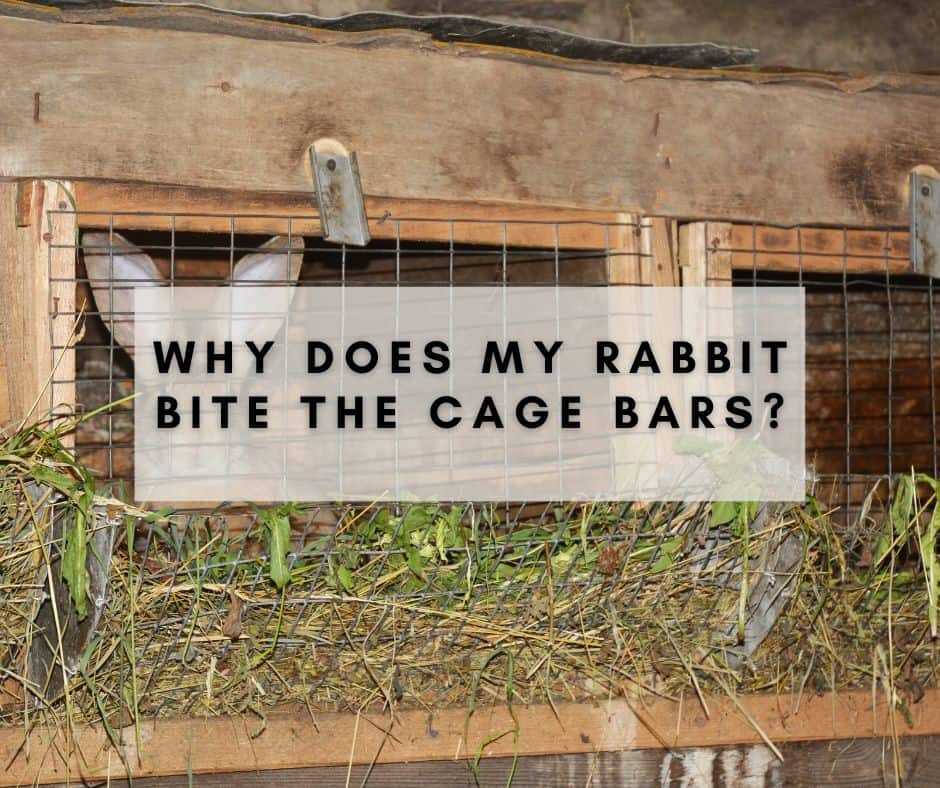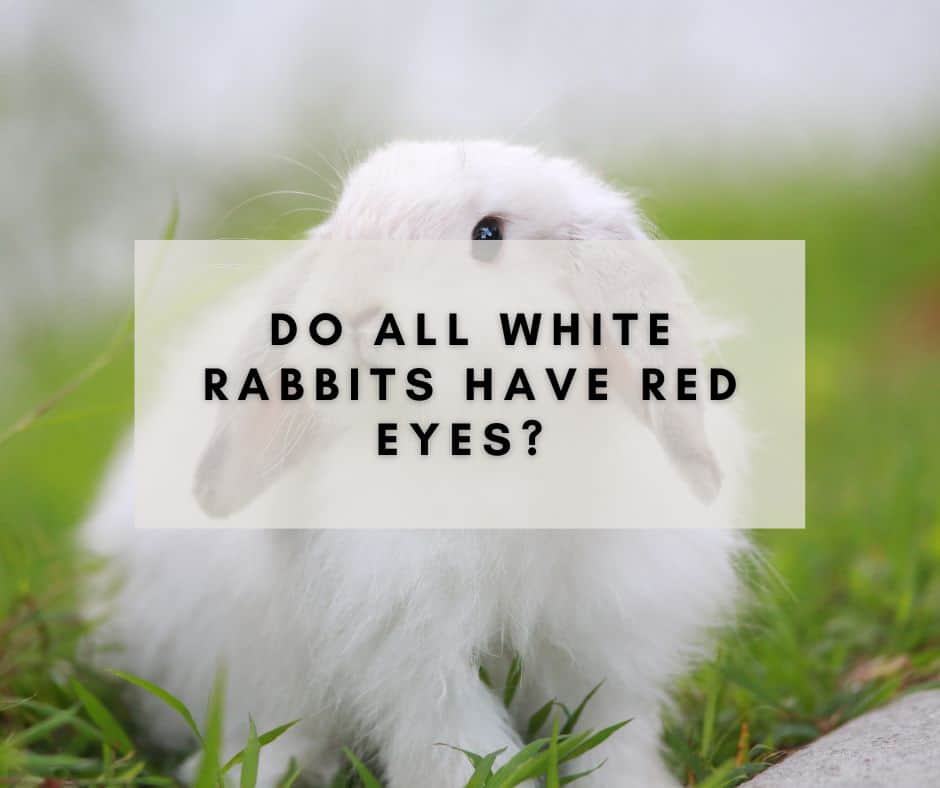While axolotls often bump into the glass walls of their aquarium, that doesn’t make them blind.
As a matter of fact, axolotls only have poor eyesight. They won’t notice new things in their tank if it does not move and have a scent! So, your axolotl likely won’t see you if you’re standing still.
So, don’t make fun of them too much if they have trouble finding your new gifts. It’s because of their visual disadvantage!
Contents
- 1 How do axolotls function with poor eyesight?
- 2 Axolotls are not blind
- 3 The exception
- 4 Does that mean axolotls are sensitive to light?
- 5 Axolotls: The two main senses
- 6 Are all Albino Axolotls Eyeless?
- 7 Can my axolotls become blind?
- 8 What can cause my axolotl’s blindness?
- 9 What does this mean for pet owners?
- 10 Conclusion
How do axolotls function with poor eyesight?
You’re probably asking, is their poor eyesight connected to wild axolotls being critically endangered?
Well, not really. It may be a factor, but they can still survive without a 20/20 vision.
Axolotls rely on their other senses to live and hunt. They’re highly capable of tracking movements in the water and using their sense of smell.
Essentially, they don’t need great eyesight when other senses do the job for them! So, if you’re ever curious about what an axolotl is up to, just take a look at their gills. That’s usually where their focus is.
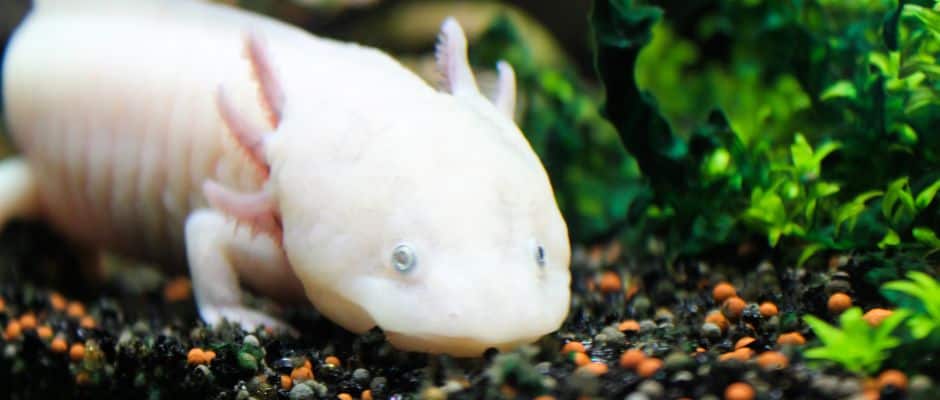
Axolotls are not blind
Yes, you read that right. They may not be able to read the big letters in the Snellen chart, but they aren’t blind.
But why? Just like their lack of land-advantageous characteristics, good eyesight may not be helpful as an aquatic creature.
Justin Marshall talks about this specific issue and how a trait’s usefulness contributes to a marine animal’s development or lack thereof.
He states that “the ability to see clearly in water is constrained by the physics of light transmission in water, which blurs images and limits the color information that can be detected.”
In other words, the animals that live in water don’t need to see as clearly as those who live on land because their world is already blurry!
We can see this same concept with whales and dolphins. They have good hearing and echolocation (bouncing sound waves off of objects to determine their location), but poor eyesight.
Some scientists believe that the axolotl’s eyesight is poor because they live in dark, murky water where not a lot of light can reach them.
The exception
Some axolotls are born with a mutation, making them eyeless. This mutation can come up even at the earliest stage of eye development.
According to a study by Cuny and Malacinski on axolotl retina and eye development, a neural plate and head epidermis that came from mutant e donors cause the lack of retina/lens development.
So yes, there are exceptions, but these only happen because of a mutation. The majority of the axolotl population is still visually-intact.
Does that mean axolotls are sensitive to light?
Yes, they are. And this is because they are neotenic. Axolotls never go through metamorphosis, a stage where most amphibians develop eyelids. Without eyelids, they have less protection for their eyes.
Moreover, being nocturnal creatures meant they were used to the dark more than the light. Thus, have trouble adjusting their eyes, especially with no eyelids.
Axolotls: The two main senses
Since axolotls cannot see very well, they rely on other senses to hunt and sense danger.
Lateral Line System
This system is found in fishes and amphibians. It helps them detect movements and pressure changes underwater.
It is the reason why a school of fish rarely bumps into each other. They have a lateral line system that helps them detect their spatial position, which helps with orientation.
The axolotl’s lateral line system runs along the side of its body and is very sensitive. With this, they can detect even the smallest movements in their vicinity.
This sense is also helpful for finding mates and knowing when predators are near.
Olfactory System
Ever wonder why axolotls can detect unmoving pellets on the bottom of the tanks? That’s because they have an olfactory system!
They can smell their prey and use it for hunting. Think of them like underwater puppies with bad eyesight.
This sense is also helpful for finding mates. Studies have shown that axolotls use chemical cues to find a mate that is genetically compatible with them.
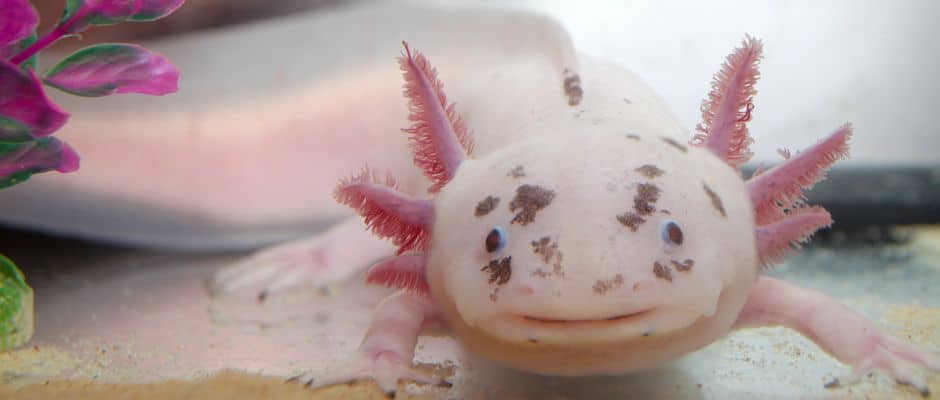
Are all Albino Axolotls Eyeless?
As a matter of fact, no, they’re not all eyeless. Eyes on albino axolotls are just a bit harder to see since their eyes blend in with the rest of their faces.
However, they’re much more sensitive to light. Based on a study, melanin helps decrease sensitivity to light. And since albino axolotls lack pigmentation, they’re more prone to sensitivity.
Can my axolotls become blind?
Axolotls have superior regenerative abilities, not just with limbs but also with some parts of their eyes!
The cornea, iris, lens, and retina can all regenerate if damaged. However, this doesn’t mean they can’t go blind.
Prolonged exposure to light is one of the main causes of blindness in axolotls. This is because their eyes are very sensitive, and without eyelids, they have no way to protect their eyes from the light.
Most of the time, what affects their eyes is old age. If your axolotl has poorer eyesight than usual, it can be due to their seniority. If not, there may be other factors at play.
What can cause my axolotl’s blindness?
As impressive as regenerative abilities sound, they can only do so much! Especially if your axolotl has poor living conditions.
Injuries
Massive injuries to the eyes can even stump an axolotl’s regeneration.
A study by Suetsugu, et. al also concluded that Axolotls are only able to regenerate their eyes during a specific timeframe after hatching. Meaning their ability for lens generation is lost once the timeframe has passed.
Infections
Infections can severely damage eyes, robbing the axolotl’s ability to (fully) regenerate their lense, especially with how complicated the body part is.
Poor quality of water
Having toxic irritants in water can cause mild discomfort and even blindness in aquatic creatures.
And remember, they cannot close their eyes, so they’re always exposed to dirt and other bacteria.
Prolonged exposure to bright lights
Not having eyelids means Axolotls are at a disadvantage when it comes to bright lights.
Light exposure, such as new stimulants in the aquarium, can negatively affect their eyesight.
In severe cases, it may even cause blindness. So, think twice before putting lights near their tank.
If your pet shows any signs of illnesses or infections, treat it as soon as possible. Just because they can live without their eyesight doesn’t mean they should!
What does this mean for pet owners?
It means there’s a learning curve to deal with! Taking care of Axolotls can be a different reality than what you’re expecting.
Because of their poor eyesight, you have to be careful when putting things in their tank.
Decorations, while fun and cute, can ultimately harm your beloved pet. Everything in the tank must be bump-safe which means no sharp objects!
This also means Axolotl pet owners should be extra careful during feeding time.
While Axolotls can smell food, there are times when they’ll miss out on some pellets that dirty the whole tank.
And a dirty tank is a no-go, especially since it breeds infections and bacteria.
These extra steps may be a bit of a hassle, but it’s all worth it, knowing that your beloved axolotls are safe and happy in their aquatic home.
Conclusion
Axolotls aren’t blind, save for a few cases of mutation, but they do have poor eyesight!
It’s not as bad as it seems since they don’t use their vision very often. They rely more on detecting movement and their sense of smell, after all.
But poor eyesight is still a disadvantage. Axolotls can easily injure themselves on sharp things they bump into.
So, as the proud owner of an Axolotl, most would opt to be sparse with decorations, all for their pet’s safety.

